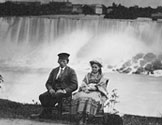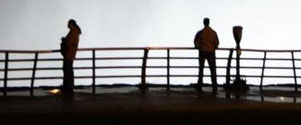

|
||||||||||||||||||||||||||||||||||||||||||
|
| ||||||||||||||||||||||||||||||||||||||||||
 |
 |
 |
 |
 Niagara Shipping Canal The idea of a shipping canal around Niagara Falls has been a matter of historical concern for generations, or more correctly, centuries. The first talk of the Niagara Ship Canal began in late 1700s and took place as recently as the early 20th century when plans were being made to build the NYS Barge Canal. In 1798, a company was incorporated for the purpose of building a shipping canal from the upper Niagara River around Niagara Falls to a spot below the Falls near present day Youngstown. By 1808, this idea caught the attention of the New York State government at the same time they entertained plans to build the Erie Canal from the Hudson River to Lake Erie. By 1823, during the construction of the Erie Canal, there still existed a general desire to see a shipping canal built around Niagara Falls. Another company formed to “hold all necessary property to open navigation from the Niagara River above the falls thereof to the heights near the village of Lewiston.” Under the auspices of Nathan Roberts, designer of the Flight of Five Locks at Lockport, a survey was made beginning at the mouth of Gill Creek, two miles above the falls, along a line due north to the escarpment at Lewiston. Roberts made a careful study of the area and determined this route could be utilized for a canal using single locks along the way for a cost of under $1 million. However, the project failed, lacking anyone willing to support the cost. About a decade later, in 1836, this time the project had gained national attention and Captain W. G. Williams, Topographical Engineer for the Untied States Army was sent by President Andrew Jackson to make surveys “preparatory to the construction of a ship canal around the Falls of Niagara.” Once again surveys were made, following the path established by Nathan Roberts, but this time at a cost estimate of $3 million. The project once again failed to move forward. The Niagara Canal lay dormant until about the year 1863 when the U.S. Congress ordered yet another survey. This time several options to bypass the Falls were presented. The results remained the same and Congress vetoed the proposal by a small majority. Probably the last reincarnation of the Niagara Ship Canal was studied around 1910 when the U.S. Army Corp of Engineers developed elaborate plans that included a canal that began at Olcott Beach on Lake Ontario that connected with the proposed Erie Barge Canal near Lockport. In spite of elaborate plans (which are part of the archive collection of the History Center) and very positive economic forecasts, the project was once again turned down. Douglas Farley, Director Ann Marie Linnabery Erie Canal Discover Center 24 Church St. Lockport NY 14094 716.439.0431 CanalDiscovery@aol.com www.NiagaraHistory.org |
|